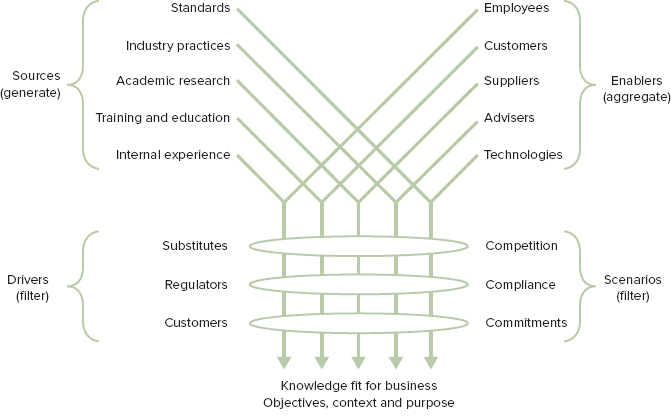Best-Practice Approaches and ITIL
ITIL is recognized worldwide as a best-practice approach for delivering IT services and IT service management. It focuses on the processes, functions, and capabilities required to support IT services in business.
Organizations need to remain competitive in the marketplace and can compare themselves to peers to identify where they can gain a competitive advantage. Commonly, they look to industry best practices to ensure they are using the best available methods and techniques to deliver a service. A number of best-practice approaches to IT are available, and organizations can use them as a benchmark to ensure that they are delivering IT services efficiently. It is important to recognize that these approaches must enable IT service providers to meet the needs of the customer, while remaining cost-effective and within the customer’s budget.
As shown in Figure 1.1, there are many sources of service management best practices.
FIGURE 1.1 Sources of service management best practices
Based on Cabinet Office ITIL material. Reproduced under license from the Cabinet Office.

The sources of service management best practices include the following:
- Proprietary knowledge/internal experience
- This is often deeply embedded in an organization. Although this is valuable, it is very difficult to share with another organization. It is also often undocumented, held as knowledge by the individual.
- Proprietary knowledge is specific to the organization and can be so customized as to be ineffective in another organization, unless it requires the same conditions.
- The sharing of this knowledge may be constrained by ownership, and it may be subject to legal or financial negotiations.
- Standards/industry practices
- This is preferable to organizations when compared to proprietary knowledge. Standards and commonly used industry practices are captured, documented, and made available publicly.
- Standards also have the advantage of being verified in a variety of situations and environments, rather than a single organization’s experience. The standards are vetted and reviewed by a wide range of partners, competitors, and suppliers.
- Commonly used standards include the following: ITIL, Lean, Six Sigma, COBIT, CMMI, Prince2, PMBOK, ISO 9000, ISO/IEC 20000, and ISO/IEC 27001.
- Training and education/academic research
- Information and education on publicly available standards and research let organizations educate their staff in a consistent manner. It is easier for organizations to acquire knowledge through the marketplace, because levels of skill and qualification can be standardized.
Using standards and publicly available knowledge enables organizations to build on their proprietary knowledge and follow best practices for their organizational requirements in service management.
These standards have to be filtered through the constraints that affect all organizations, such as regulatory requirements, compliance, and financial concerns.
